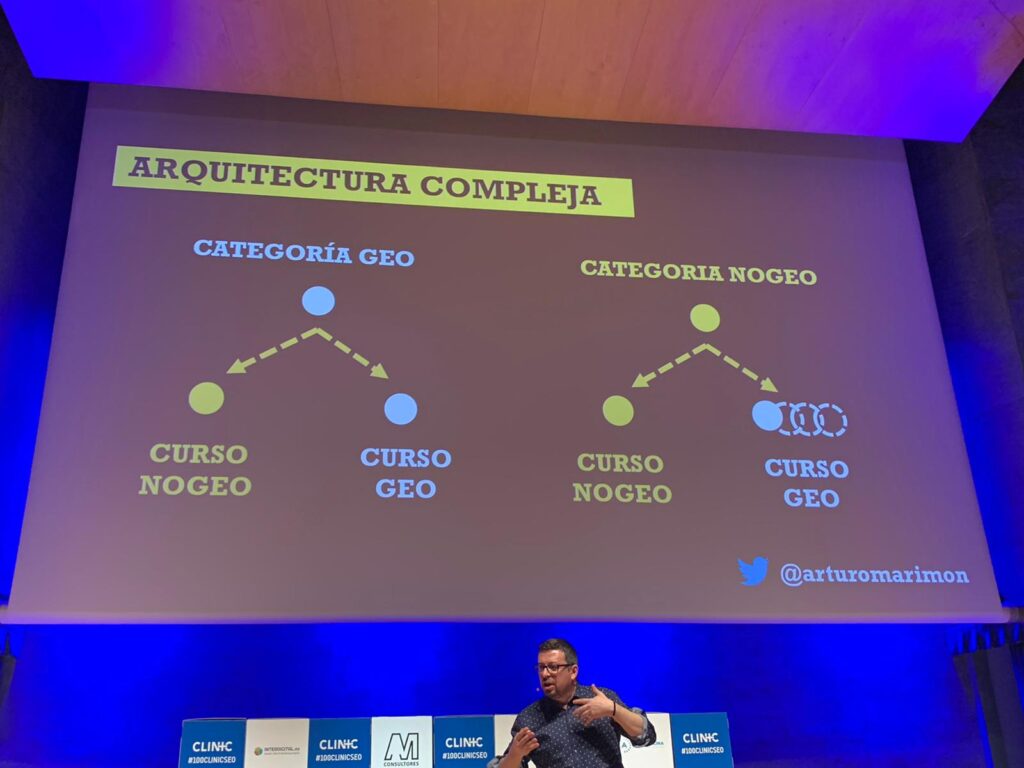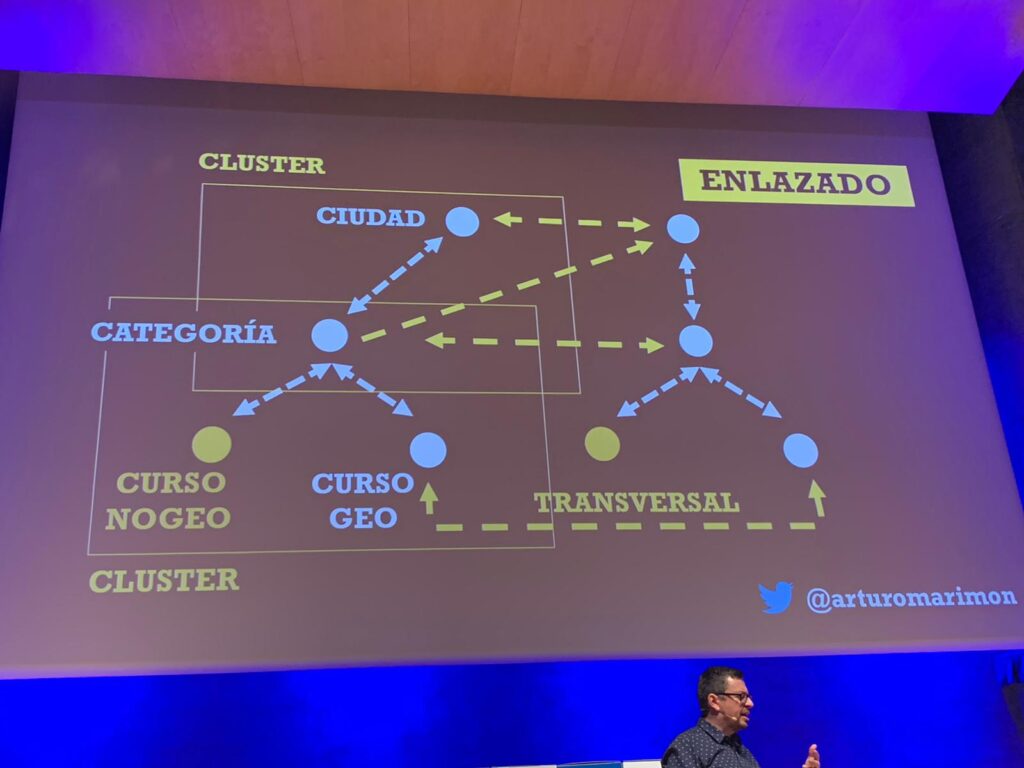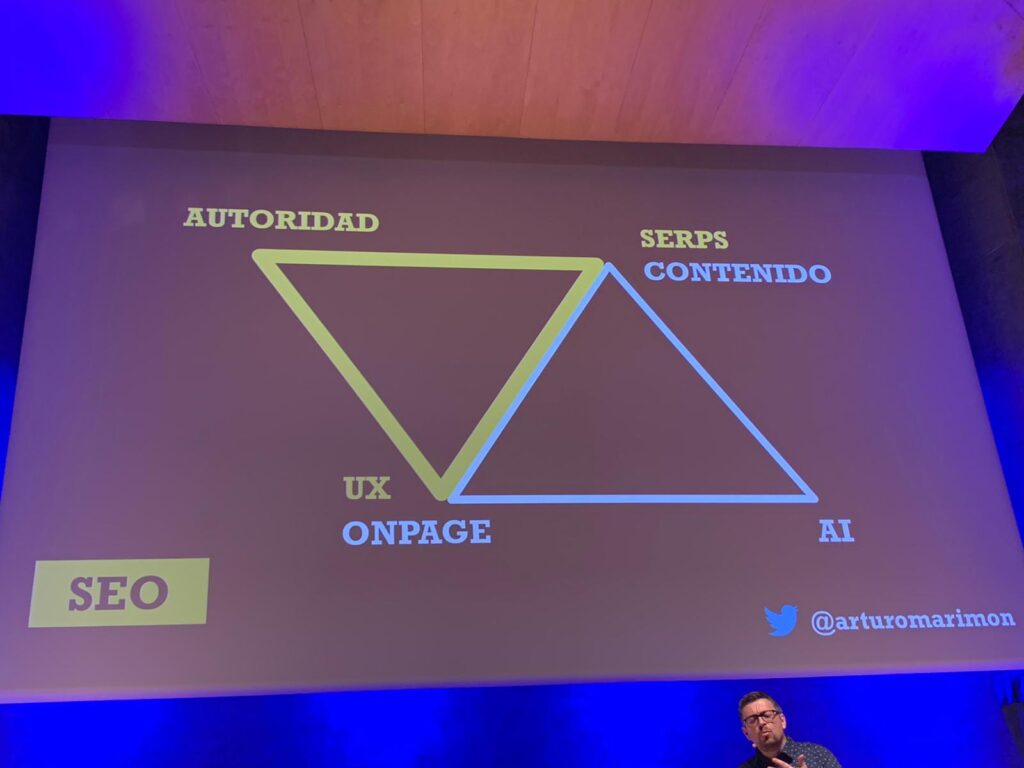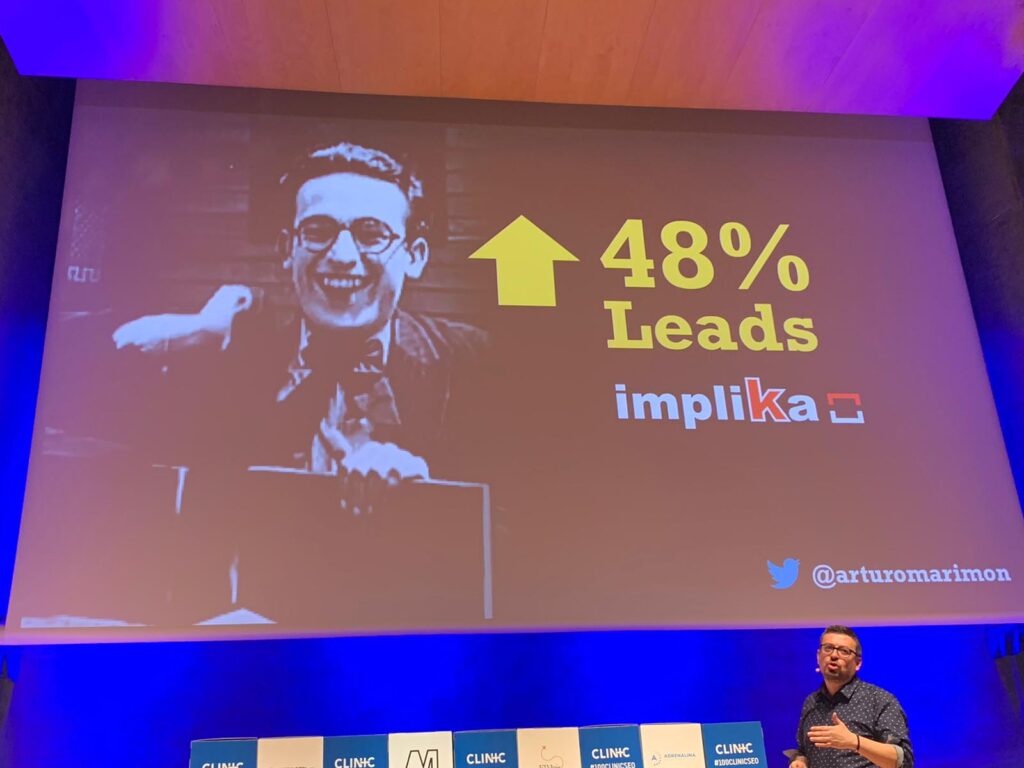Written by Fernando Maciá
It is the turn of Arturo Marimón(@arturomarimon), SEO Consultant & CEO of AM Consultores.
The sector
The training sector has a strong seasonality: it compares data with the previous year, not with the previous month.
Implika is a Bilbao-based company dedicated to training with a strong focus on job placement. Growth targets of 25%. The objectives are the client’s.
Competition: educaweb and eMagister, very large models with large technical and SEO teams. But our model is more niche, we can beat them in our niche.
Educaweb has been very affected by Panda: a lot of thin content and duplicate. They were generated at a time when SEO was done in this way and have a behavior that is not going well today.
SEO Strategy
SEO is not only technical: it is strategy. In SEO it doesn’t matter how good you are technically. There is something else. The first mistake is to think that your home is not the home. It is the page that matters the least. In information architecture you start from the idea that the user begins his visit at the home page and that is a lie. Google is the home page and the user enters the site through an internal page and will continue navigating from there.
Moreover, in the training sector, SERPs are geolocalized. Local results rule. The Venice Update did change SEO because it brought geolocated results to the forefront and the Pigeon update further micro-localized them.
Generalizing in SEO is a problem. When we analyzed our niche, we saw SERPs that were geolocated and others that were not. The architecture had to respond to both needs.
Information architecture
Its AI was from a local company, which later grew statewide. But it did not respond to the users’ search intent. They were constrained by this architecture.
SEO card sorting was done: all courses were decomposed, new relationships were established, we generated categories based on matching keywords, distinguished local from non-local SERPs and the client added the business part.
Linked
GEO category and non-GEO category with geolocated courses and non-geolocated courses. The important thing about the architecture is the internal linking. Many SEOs talk about internal silos: isolating groups of content and not relating them to each other. This does not work.
There are relationships between one cluster and the other. This relationship must be linked. The important thing is cross-linking: what we link to what. Marimón recommends that we remove all unnecessary links for the user and we couldn’t agree more.
Google’s algorithm is simple: if a link is not likely to be clicked by the user, that link should not exist. If we think about the user, then the architecture and the links that compose it do work very well.
We moved on to a new, well-designed architecture. But this requires migrating the project from totally different categories to a new structure.
Web migration was done and traffic increased: Google has been very slow in redirects, although it did index new content faster. In the end, traffic dropped by de-indexing the above URLs. The customer, understandably, became nervous. He eventually recovered.
Sistrix started to give lower visibility: it does not show geopositioned results. Then we had to start using other tools.
Content, onpage, SERPs
AI is the foundation of any project.
Then you need well-designed and well-crafted content.
It is a balance of multiple factors.
SERPs are all about how we attack the SERPs.
And user experience is a very important part of SEO. We have to improve the CTR (it does not help us in SEO directly although we do get more traffic).
When we experiment with clients, we try things that we can apply to the rest of the media. Content is not written, it is designed to be consumed in SERPs as well.
All content has to be designed for that.
Results
We eliminated the blog: we only optimized it so that it would not affect SEO. We do not include it in our KPIs.
We achieved 65% more clicks but more importantly, we increased 48% more leads. We don’t attract traffic: we attack the queries that actually bring traffic.
If you want to know more, visit our post on SEO and information architecture, with great tips on how to take advantage of the structure of the Web site to improve its positioning in search engines.







